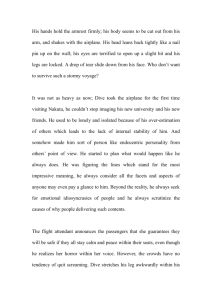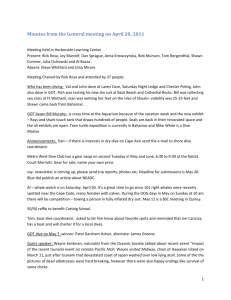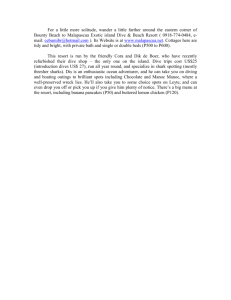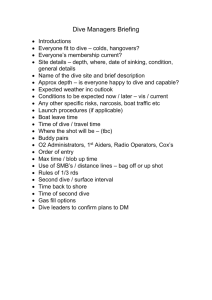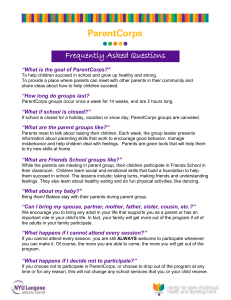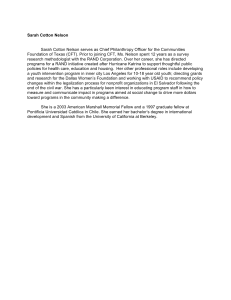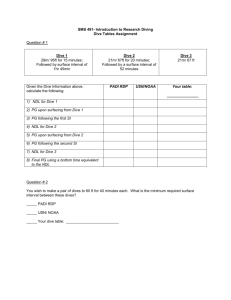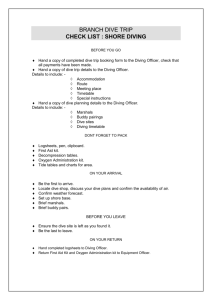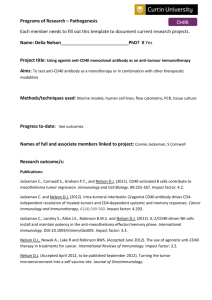Handout for First Day of Class Session
advertisement
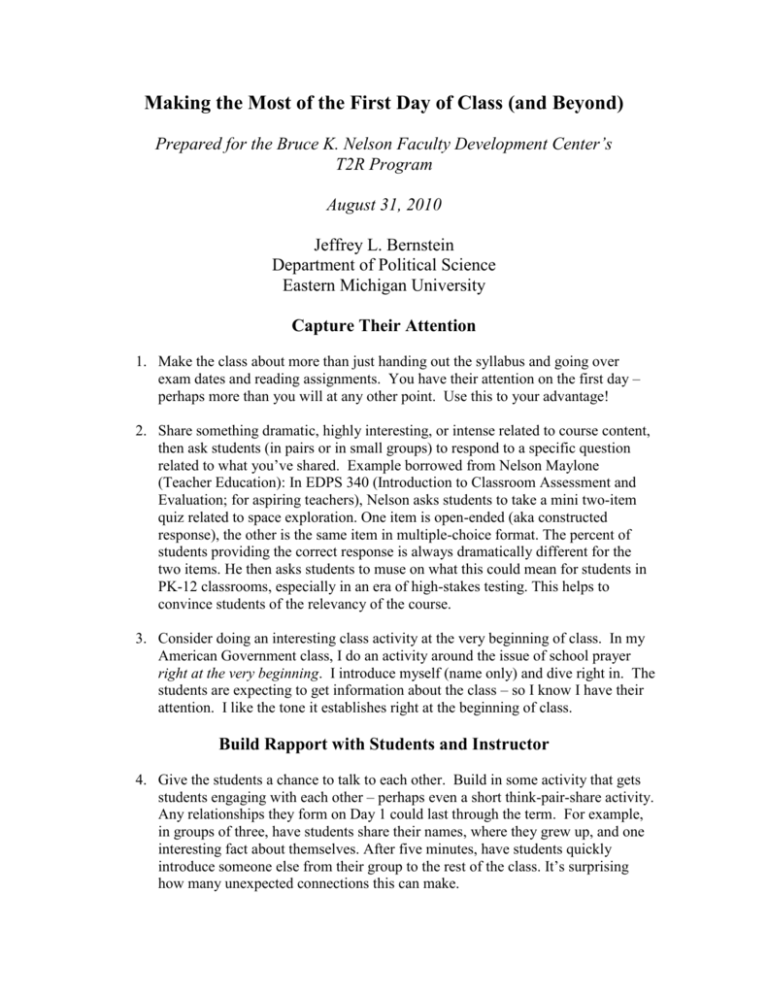
Making the Most of the First Day of Class (and Beyond) Prepared for the Bruce K. Nelson Faculty Development Center’s T2R Program August 31, 2010 Jeffrey L. Bernstein Department of Political Science Eastern Michigan University Capture Their Attention 1. Make the class about more than just handing out the syllabus and going over exam dates and reading assignments. You have their attention on the first day – perhaps more than you will at any other point. Use this to your advantage! 2. Share something dramatic, highly interesting, or intense related to course content, then ask students (in pairs or in small groups) to respond to a specific question related to what you’ve shared. Example borrowed from Nelson Maylone (Teacher Education): In EDPS 340 (Introduction to Classroom Assessment and Evaluation; for aspiring teachers), Nelson asks students to take a mini two-item quiz related to space exploration. One item is open-ended (aka constructed response), the other is the same item in multiple-choice format. The percent of students providing the correct response is always dramatically different for the two items. He then asks students to muse on what this could mean for students in PK-12 classrooms, especially in an era of high-stakes testing. This helps to convince students of the relevancy of the course. 3. Consider doing an interesting class activity at the very beginning of class. In my American Government class, I do an activity around the issue of school prayer right at the very beginning. I introduce myself (name only) and dive right in. The students are expecting to get information about the class – so I know I have their attention. I like the tone it establishes right at the beginning of class. Build Rapport with Students and Instructor 4. Give the students a chance to talk to each other. Build in some activity that gets students engaging with each other – perhaps even a short think-pair-share activity. Any relationships they form on Day 1 could last through the term. For example, in groups of three, have students share their names, where they grew up, and one interesting fact about themselves. After five minutes, have students quickly introduce someone else from their group to the rest of the class. It’s surprising how many unexpected connections this can make. 5. Share something about yourself. Only you know how to draw the line – you probably don’t want to share intimate details of your wedding night. But anything you can tell the students that humanizes you can make you more approachable, and give the students a greater comfort level. I tell my students a little about my kids, about how much I suffer along with the New York Mets, and about my juggling. It makes me more of a person, and possibly even someone they might have something to say to in office hours. Set Up a Pattern for What You Want Your Course to Look Like 6. Establish a pattern of students talking in the class – if they speak aloud on Day 1, they are more likely to do so as the course continues. Build in opportunities for students to use their voice – even something as simple as introducing themselves can ease the taboo against speaking in class. 7. Keep the class the full time. It shows the students that you take your class time seriously, and that you are ready to dive in. Vacation’s over – now it is time to work! 8. Give students an assignment to do for the next class. Again, this sets the tone that the vacation is over, and that you are ready to dive into the semester. If you start off slowly, so will your students. Let Students Know Their Success Is Important to You 9. Distribute and go over a “Ten Ways to Succeed in (your name)’s Class” sheet. It’s important that the tone be more helpful than intimidating. I’ve provided an example of this that I have used in class – it’s not brilliant, by any means, but it might get your minds going around ideas for what yours should say. This sheet needs to be written in your voice, not mine. 10. Emphasize to students on Day 1 all the things you plan to do to help them succeed – even things such as holding office hours and answering student questions in class convey this message. If you routinely do other things – such as holding review sessions, engaging a Supplemental Instructor, or providing review sheets – mention this as well. Students may be intimidated by your course or by college – this applies especially to FTIACs. Easing their anxiety can go a long way toward having a successful class experience.
